With crypto making many overnight millionaires, blockchain platforms for crypto exchange are on the rise! As we navigate through 2024, blockchain technology continues to revolutionize various industries with its decentralized and secure nature.
Which makes choosing the right blockchain platform can be overwhelming, especially with the ever-expanding landscape. In this blog post, we’ll break down the top 10 contenders based on key factors like transaction speed, scalability, security, and the value they bring to developers and users.
Table of Contents
1. Ethereum:
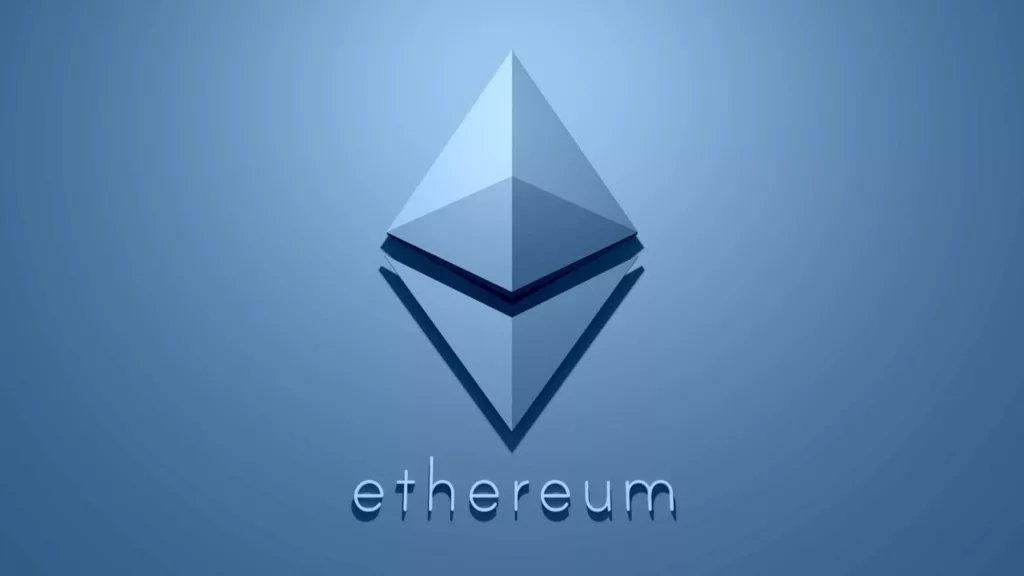
With currently around 3,511 DApps on the Ethereum network, Ethereum still takes the top spot and is a trusted platform among blockchain enthusiasts. Ethereum is a giant computer network, not a single company. It’s the second-biggest platform for cryptocurrency, after Bitcoin, but with a special twist – smart contracts. They allow people to build all sorts of cool applications without needing a central authority, kind of like an app store with no gatekeeper.
Ethereum is open to anyone to use and build on, making it popular with developers. It’s like a giant community working together to create new things. While Ethereum itself isn’t a currency, it has its own digital money called Ether, used to pay for transactions within the network. The success of DeFi (financial apps built on blockchain) is closely linked to Ethereum’s health, so they kind of go hand-in-hand.
| Strengths | Weaknesses |
| Smart Contracts: Ethereum pioneered smart contracts, self-executing agreements that act like automated “if-then” rules. This paves the way for building a vast array of decentralized applications (DApps). Large Developer Community: Ethereum boasts a large and active developer community. This collaborative spirit fuels constant innovation and strengthens the platform. Flexibility: Ethereum’s flexibility allows it to support a diverse range of DApps, from cryptocurrency exchanges to NFT marketplaces and beyond. Decentralization: The Ethereum network operates on a global scale, free from central control. Nodes across the world validate transactions, ensuring a secure and democratic system. | Scalability: Currently, Ethereum faces scalability limitations. As transaction volume increases, network congestion can occur, leading to slower processing and higher fees. Developers are actively addressing this issue. Security: While decentralization enhances security, it also makes Ethereum a target for attackers. For example, a vulnerability in a 2016 DAO (decentralized autonomous organization) resulted in a $40 million theft. Continuous vigilance is crucial. Energy Consumption: The current proof-of-work consensus mechanism used by Ethereum consumes significant energy. However, the upcoming Ethereum 2.0 upgrade promises a transition to a more energy-efficient proof-of-stake system. |
2. Solana:
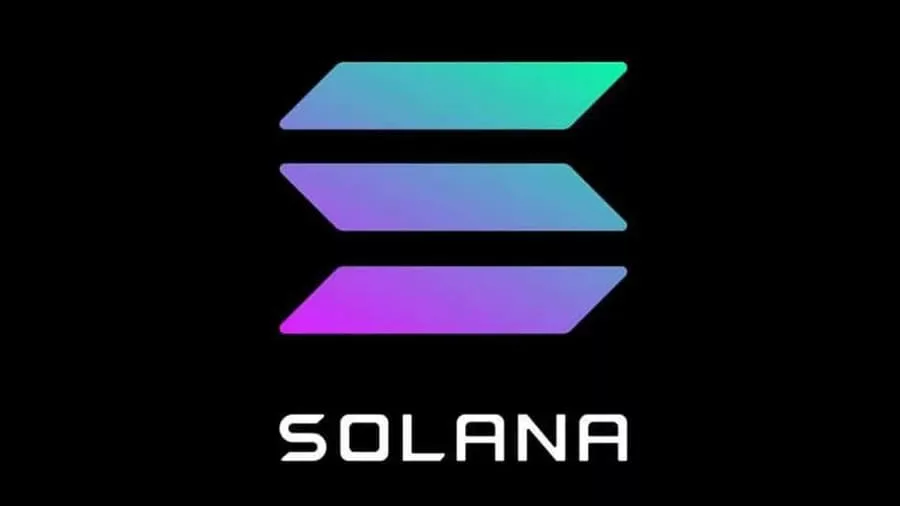
Solana’s fast transactions and resistance to censorship make it one of the most popular choices for blockchain platforms. Imagine launching decentralized applications (dApps) that settle almost instantly – that’s the power of Solana. Its resistance to censorship is what makes Solana a popular choice for trading crypto.
Solana operates like a single, global computer, open to anyone to use and build on, with a focus on decentralization (no single entity in charge). Built to handle a large user base, developers using Solana can focus on creating great applications without worrying about the technical limitations of the blockchain itself. It’s like having a super-fast highway for your app to run on!
| Strengths: | Weaknesses: |
| Speed & Transaction Fee: Solana is a superstar when it comes to fast transactions and low fees. Compared to other platforms, sending things on Solana is quick and cheap (think under $0.05 per transaction!). Scalability: Solana is designed to handle massive growth. Imagine a network that can keep up with the demands of the global economy – that’s Solana’s potential. Developer Community: Solana has a thriving developer community with over 500 dApps already in the works. With its user-friendly features, it’s a great platform for developers to build on. Resistance to Censorship: Solana is built for everyday use, free from central control. Delegated Staking: Solana allows SOL owners to earn rewards by staking their tokens on the network – like getting paid for holding your money in a savings account. | High Barrier to Become a Validator: Setting up a validator node on Solana requires powerful hardware and ongoing maintenance costs (around $40,000-$95,000 per year). This can limit who can participate in securing the network. High Wealth Concentration: Currently, a large portion of SOL tokens are held by early investors and venture capital firms. Monolithic Layer-One Design: Solana’s current design might face challenges as the network processes millions of transactions per second in the future. Developers are working on solutions for this. Network Uptime and Reliability: Compared to other blockchain platforms, Solana’s network hasn’t always been as stable, with some downtime in the past. |
3. Hyperledger Fabric:
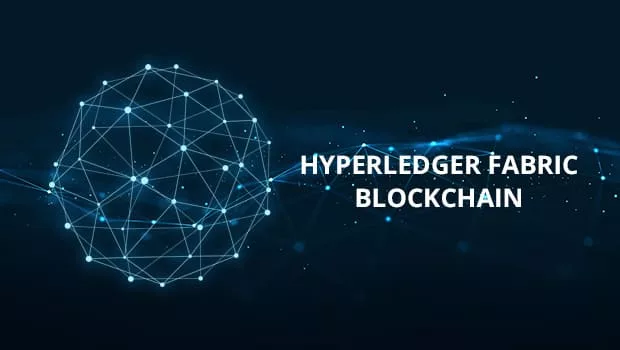
Hyperledger Fabric is a powerful tool designed specifically for businesses to use blockchain technology. It’s open-source, meaning anyone can contribute and improve it. A secure network where only authorized participants can join and share data is the core idea behind Hyperledger Fabric. Companies can control what information they share with others on the network.
Hyperledger Fabric is flexible and can be customized to fit the needs of different industries. Many organizations from around the world have contributed to its development, making it a collaborative effort. While IBM is a major contributor, many others play a role in its ongoing development.
| Strengths: | Weaknesses: |
| Modular Architecture: Hyperledger Fabric is designed with a modular approach. Imagine building blocks that developers can easily snap together. This allows developers to create custom features, like managing user identities on the network. Permissioned Framework: Only authorized members with verified identities can participate in a Hyperledger Fabric network. This ensures data privacy and security, perfect for businesses that deal with sensitive information. Scalability and Flexibility: Hyperledger Fabric is known for its strong scalability and flexibility. It divides the transaction processing workflow into three stages: smart contracts (chaincode), transaction ordering, and transaction validation and commitment. This strategic segregation minimizes trust levels, enhances network scalability, and improves overall performance. Private Transactions: For businesses concerned about sensitive data, Hyperledger Fabric offers private transactions. This ensures that only authorized parties can see specific information. | High Barrier to Become a Validator: Due to hardware requirements and ongoing costs to maintain, there’s a high barrier to becoming a validator, which can lead to network centralization. High Wealth Concentration: A large portion of the network’s wealth is owned by early insiders and venture capital companies. Monolithic Layer-One Design: While highly performant now, Solana’s “monolithic layer-one” design will struggle to scale into the millions of transactions per second. Network Uptime and Reliability: Compared to other blockchain frameworks, Hyperledger Fabric’s network uptime and reliability suffer. |
4. Polygon:
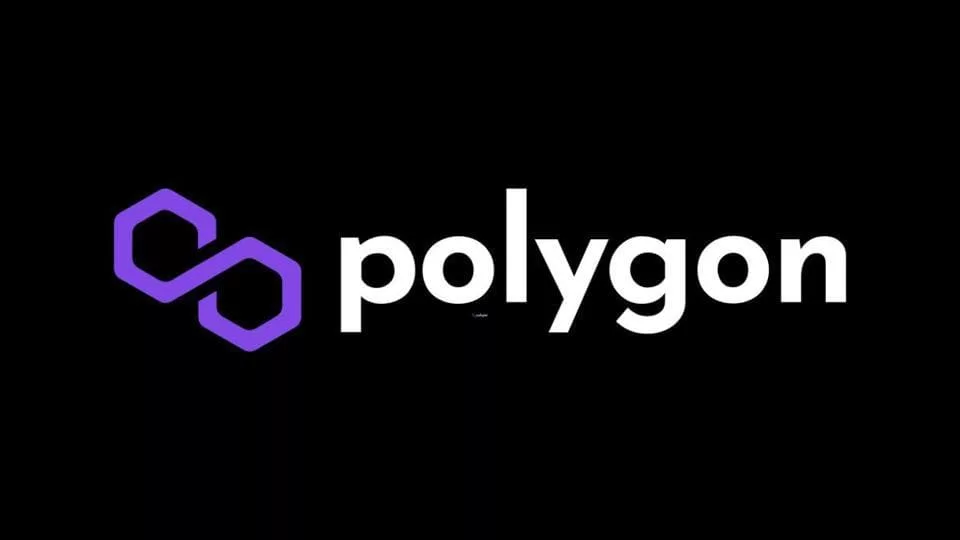
Polygon isn’t a single blockchain, but rather a set of tools designed to improve Ethereum’s performance. Imagine adding a turbocharger to your car – that’s what Polygon does for Ethereum. This powerful system allows developers to build decentralized applications (dApps) with features like near-instant transaction completion. Despite operating separately, Polygon connects seamlessly with Ethereum-based projects.
Polygon is built for growth, allowing applications to handle millions of users. Developers can focus on creating great apps without worrying about the technical limitations of the blockchain itself. The recent surge in active users (up 69%) and network revenue (up 152%) shows Polygon’s growing popularity.
| Strengths: | Weaknesses: |
| Low Transaction Fee: Sending transactions on Polygon is very affordable, typically costing less than a penny! Fast Transactions: Polygon is known for its ability to handle massive transaction volumes (up to 65,000 per second!) This translates to fast and efficient processing. Security: Polygon leverages the security of the Ethereum blockchain, providing an extra layer of protection for your transactions. Interoperability: Polygon acts as a bridge, allowing projects built on Ethereum to work smoothly with Polygon’s features. | Dependence on Ethereum: While Polygon benefits from its connection to Ethereum, it’s also dependent on its stability. Any issues with Ethereum could potentially impact Polygon. Adoption: As a newer platform, Polygon is still gaining widespread adoption within the blockchain community. |
5. XRP Ledger:
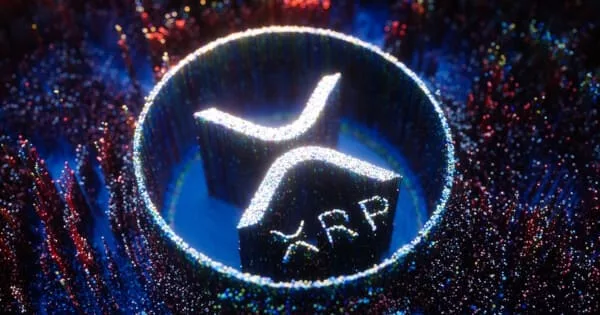
The XRP Ledger (XRPL) is a public blockchain designed for fast, low-cost transfers. With XRP Ledger, sending money across borders instantly and for a fraction of the cost is no longer a challenge. It can handle various digital assets, including XRP, traditional currencies, and more.
XRPL is open-source, meaning anyone can contribute to its development. Launched in 2012, it’s a global network maintained by a community of developers, users, and businesses working together. The recent surge in XRP’s daily trading volume (up 46%) reflects its growing popularity.
| Strengths: | Weaknesses: |
| Speed Demon: XRPL boasts near-instant transaction settlements, making it ideal for things like international payments that can be slow and expensive. Built to Scale: The XRPL network can handle thousands of transactions per second, making it suitable for large-scale financial operations. Keeping Costs Down: Transactions on XRPL are very affordable, a benefit for individuals, businesses, and financial institutions alike. Security and Transparency: XRPL utilizes blockchain technology to ensure secure and transparent transactions. It uses a special consensus mechanism to verify transactions without relying on a central authority. Eco-Friendly Choice: The consensus mechanism used by XRPL is energy-efficient, making it a more sustainable option compared to other blockchain platforms. | Centralized Control Concerns: A large portion of XRP is controlled by Ripple Labs, a private company. This raises concerns about centralization, as users are placing trust in a single entity. Legal Hurdles: Ripple Labs is currently facing legal challenges regarding XRP’s classification as a security. This uncertainty can be a deterrent for some users. Adoption in Progress: While XRPL offers benefits for cross-border payments, it’s not yet widely adopted by all banks within the Ripple protocol. Minimum Balance Requirement: Similar to some bank accounts, XRP Ledger wallets require users to maintain a minimum balance in XRP. |
6. Sei:
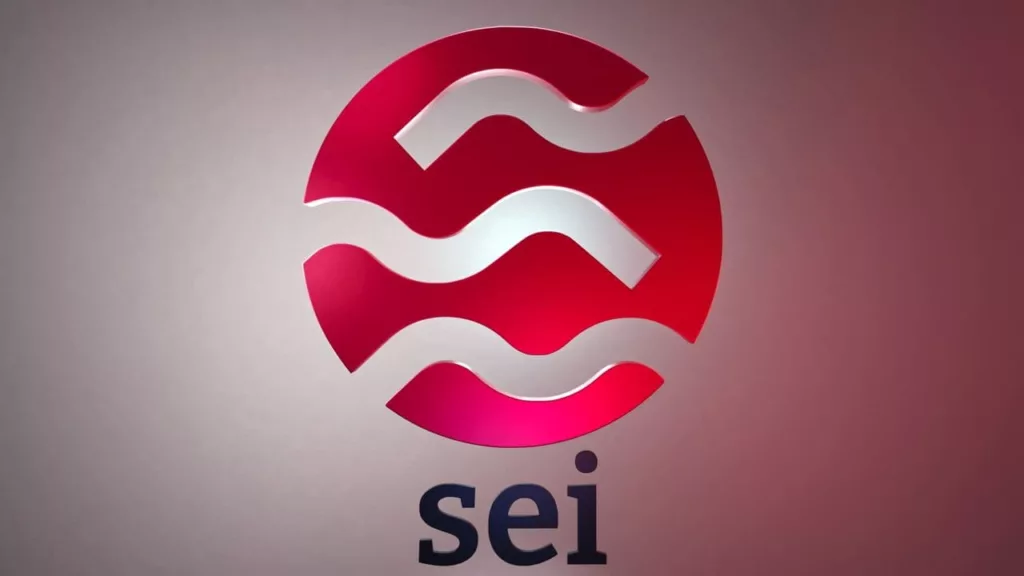
Sei is an open-source blockchain hosting a vibrant ecosystem of decentralized applications (dApps). It uses proof-of-stake consensus and ground-breaking technologies like Twin Turbo Consensus and Parallelization. The Sei blockchain is the fastest chain in existence, giving users a web2-like experience with all the benefits of web3 decentralization. Sei protocol’s native staking token, SEI, is used for governance and for validator rewards1. Validators from all around the world secure the Sei blockchain and ensure its accuracy. With a circulating supply of 2.8 Billion SEI, Sei is valued at a market cap of $1,287,931,404.
| Strengths: | Weaknesses: |
| Fast Transaction Processing Times: Sei boasts the fastest transaction speeds in the blockchain world, offering a smooth and familiar experience (like using web2 platforms) with the added benefits of decentralization (web3). Security: Sei uses a robust security system with validators around the globe ensuring the accuracy and reliability of the network. SEI, the platform’s native token, is used for governance and rewarding validators who contribute to network security. Support for Many Blockchain-Based Projects: Sei can support a wide range of decentralized trading applications, fostering innovation in the space. | Dependence on Validators: Validators from all around the world secure the Sei blockchain and ensure its accuracy. However, this dependence on validators could be a potential weakness if there are not enough validators or if they are not reliable. New and Less Established: As a relatively new platform, Sei may face challenges in terms of adoption and acceptance by the wider blockchain community. |
7. Avalanche:
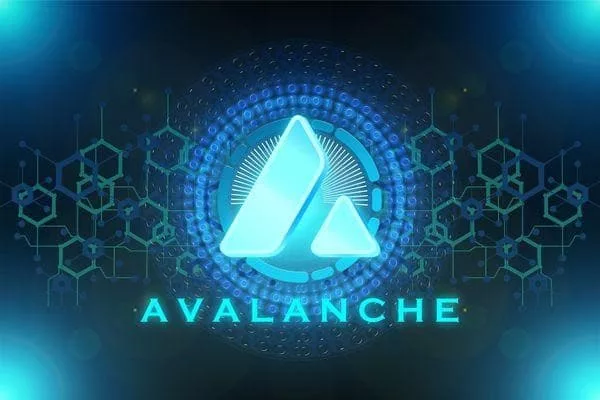
In 2024, the average number of Avalanche transactions every day is around 3,977.73 M; this makes it a very lively blockchain platform for your trading. Avalanche is an open-source platform designed for building decentralized applications (dApps). Imagine a powerful network where developers can create innovative apps quickly and securely. Avalanche is built for speed and scalability, making it suitable for large-scale applications like global financial systems.
| Strengths | Weaknesses: |
| Speed: Transactions on Avalanche are super fast, with near-instant finality. Say goodbye to waiting for transactions to process! Built to Grow: Avalanche is designed to handle massive growth, meaning it can adapt to a large number of users and applications. Rewards for Participation: The Avalanche network rewards users who contribute to its security and operations. The more the network is used, the more rewards participants can earn. Variety: Avalanche can support a wide range of blockchain-based projects, making it a versatile platform for developers. Community Driven: Transaction fees and how new Avalanche coins are created are decided by the community, promoting a democratic approach. | High Entry Barrier: To become a validator on Avalanche, you need to stake a significant amount of AVAX tokens. This can limit who can participate in securing the network. No Penalty for Malicious or Careless Validators: Currently, there’s no penalty system in place for validators who act maliciously or make careless mistakes. This is an area under development. |
8. Polkadot:
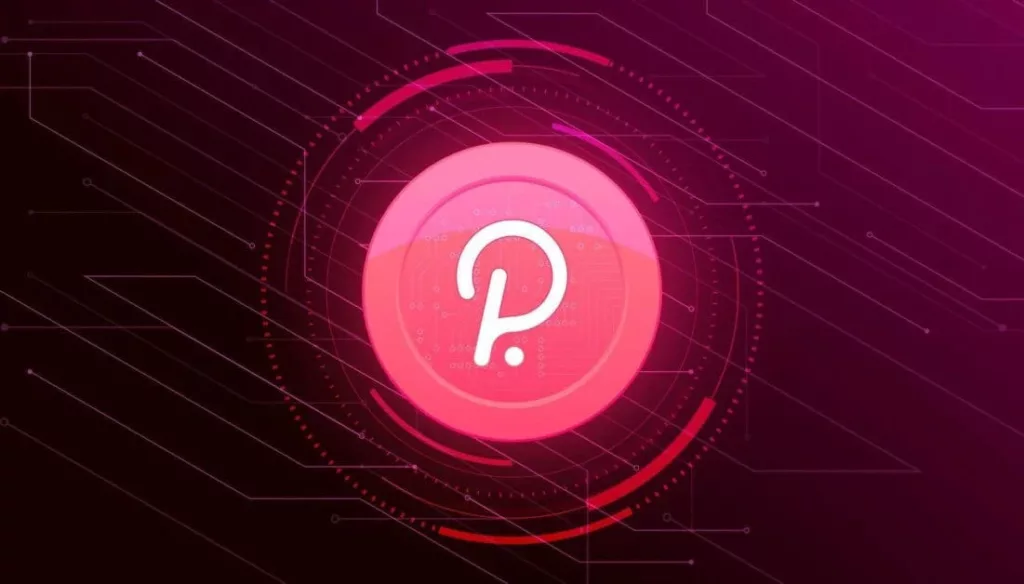
Polkadot is a cutting-edge blockchain protocol designed to unify multiple specialized blockchains into a single network. This allows developers to launch decentralized applications (dApps) with features like near-instant transaction completion. Here’s a breakdown of Polkadot’s strengths and weaknesses:
| Strengths: | Weaknesses: |
| Interoperability: Unlike many blockchains, Polkadot allows different blockchains to communicate and exchange data seamlessly. Parachain Power: Polkadot utilizes a parachain architecture. This means multiple specialized chains working together – each optimized for a specific task – all connected within the Polkadot network. Scalability for Growth: Polkadot uses a sharded multichain approach. This means it can process transactions on multiple chains simultaneously, avoiding the limitations of older, single-chain networks. Shared Security: Polkadot offers a shared security layer for connected blockchains, helping to ensure their overall robustness. Open Governance: Polkadot uses an on-chain governance system where stakeholders can participate in decision-making processes. | Past Vulnerabilities: Polkadot has encountered code vulnerabilities in the past, leading to hacks and financial losses. Limited Parachain Slots: There are a finite number of parachain slots available on the Polkadot network. These slots are auctioned, potentially making it difficult for smaller projects to participate. Steep Learning Curve: The development tools for Polkadot can be complex for newcomers, potentially hindering wider adoption. |
9. Binance Smart Chain (BSC):
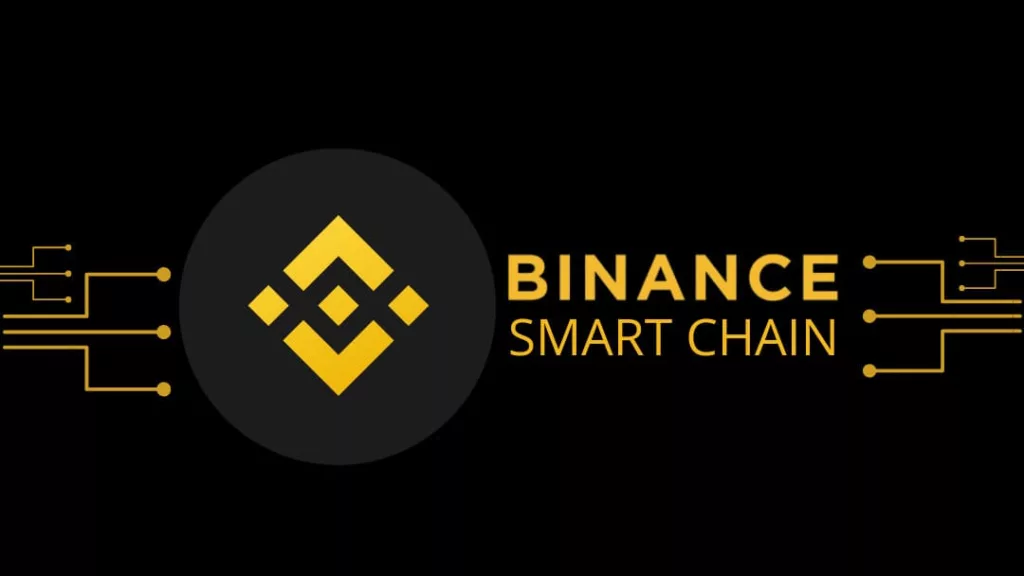
Binance Smart Chain (BSC) is a blockchain network designed for speed, affordability, and ease of use for developers. It offers a variety of tools and applications for the ever-growing world of Web3.
In 2022, the BNB Smart Chain (BSC) and BNB Beacon Chain were put together under the BNB Chain ecosystem. Since then, the two blockchains have continued to operate separately, serving different use cases.
| Strengths: | Weaknesses: |
| Developer Friendly: BSC is compatible with Ethereum smart contracts, allowing developers to easily build decentralized applications (dApps) by leveraging their existing knowledge and code. Low Transaction Costs: One of BSC’s biggest advantages is its low transaction fees, making it an attractive option for users and developers alike. Built for Speed: BSC boasts high transaction processing speeds, significantly faster than Ethereum, allowing for quicker and more efficient applications. Growing User Base: Despite being relatively new, BSC has attracted a significant user base, demonstrating its potential. Backed by Binance: The network benefits from the established reputation and resources of the Binance ecosystem. | Increased Complexity: BSC’s compatibility with Ethereum smart contracts adds a layer of complexity compared to simpler blockchains. Regulatory Uncertainty: The regulatory landscape surrounding cryptocurrency can be challenging, and BSC is no exception. Limited Functionality (US): For users in certain regions (like the US), limited functionality on Binance.us may make BSC less appealing compared to other options. |
10. Cardano:

Cardano is a blockchain platform for smart contracts. Cardano’s blockchain operates in a unique way compared to others. It uses a scientific approach with a methodology based on formal and peer-reviewed academic research.
The development team consists of a large global collective of expert engineers and researchers. It has a circulating supply of 32,066,390,668 ADA coins. The top exchanges for trading in Cardano are currently Binance, Huobi Global, OKEx, CoinTiger, and FTX2.
| Strengths: | Weaknesses: |
| Scientific Research: Cardano prioritizes academic rigor, basing its development on peer-reviewed research. This approach aims to ensure a strong foundation for the platform. Ouroboros Algorithm: Cardano’s Ouroboros proof-of-stake algorithm is designed to be more scalable and environmentally friendly compared to older proof-of-work systems. Strong Team: Cardano boasts a strong team with ample financial resources, including development activities by Input Output Hong Kong (IOHK). Transparent Roadmap: Cardano has an extremely detailed and transparent roadmap that allows users to have insights into where the project is headed. | Slow Progress: Cardano’s commitment to research can lead to a slower development pace. While this ensures a robust foundation, it means the platform may not have the same level of real-world functionality as some established blockchains. Limited Current Use: The value of ADA, Cardano’s native token, might be inflated compared to its current utility. Other competing blockchains with more established ecosystems might offer better value in the short term. |
Conclusion
That’s the top 10 blockchain platforms rocking the scene in 2024! From Ethereum’s smart contract muscle to Cardano’s research-driven approach, and Binance Smart Chain’s budget-friendly transactions to Polkadot’s bridge-building capabilities, this diverse bunch is pushing the boundaries of what blockchain can do.
But blockchain technology never sleeps! New blockchain platforms are constantly emerging, and keeping an eye on the latest advancements is crucial. So, whether you’re a developer with a killer dApp idea, a business looking to leverage blockchain tech, or simply a curious crypto enthusiast, familiarizing yourself with these platforms can unlock a treasure trove of opportunities.
Having gone through our analysis, and you are still not sure which platform is the right one for you? Our expertise is just one click away. Contact Vinova to get a thorough consultation on the latest must-knows in blockchain platforms and technology, today!